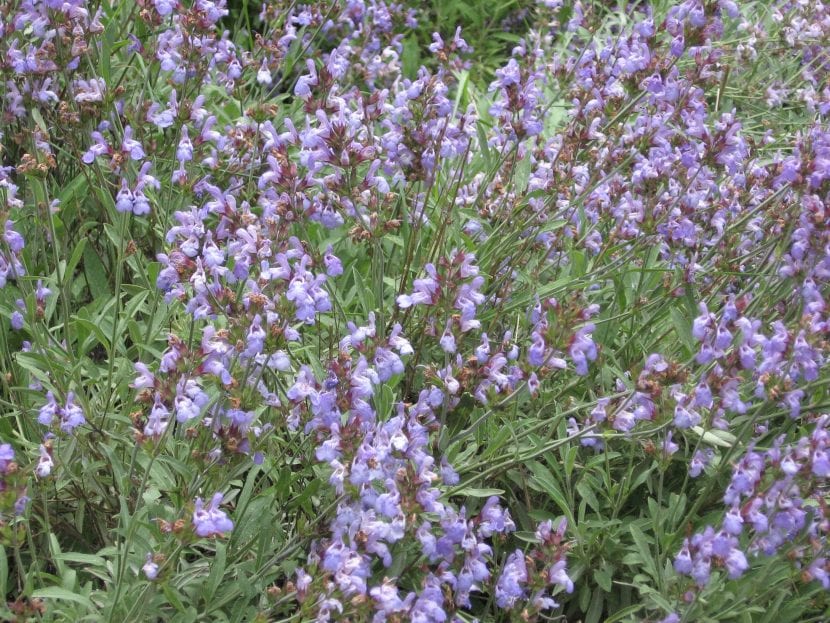
La Salvia officinalis It is a herbaceous plant that we can find in the temperate and warm regions of the world. It has a fairly fast growth rate, and its cultivation needs are so low that we could say that it can be taken care of on its own once it has been planted in the garden for at least a year.
Besides being very decorative, has various uses both in cooking and in alternative medicine. But I'd better tell you about it in detail below. 😉
Origin and characteristics of Salvia officinalis
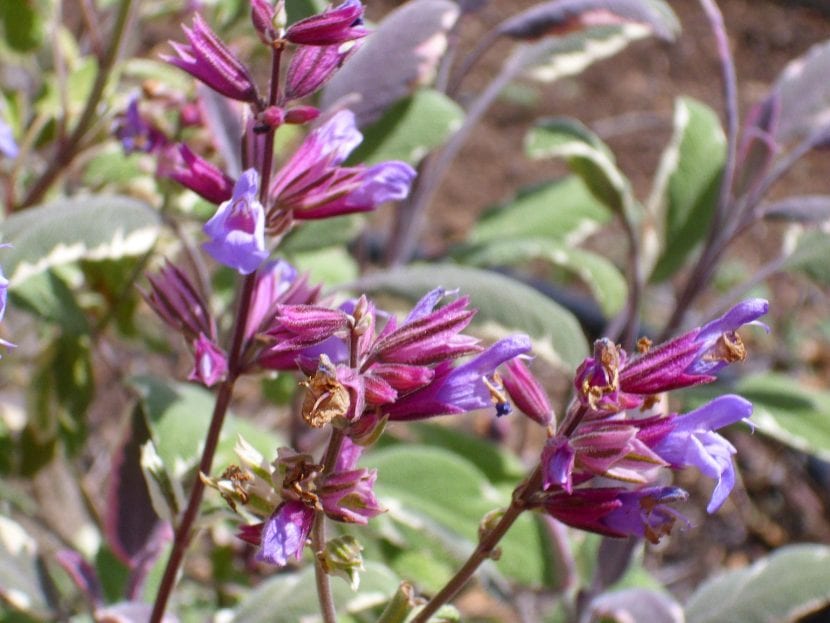
Our protagonist is an aromatic perennial herbaceous plant native to the Mediterranean region, where it grows in rocky terrain and dry grasslands, from sea level to mountain areas that is known by all these common names: common sage, royal sage, Castile sage, fine sage, officinal sage, Granada sage, fine salima , sacred herb, and sage from Moncayo.
Reaches a height of up to 70 centimeters, and is formed by erect and pubescent stems from which sprout petiolate, oblong and oval leaves, bluish-green, purple, variegated or tricolor (rarer).
The flowers are grouped in clusters and measure about 3cm. They are pink in color and appear in spring.
There are different cultivars:
- Alba: white flowers.
- Berggarten: has elongated leaves.
- Icterin: has greenish-yellow variegated leaves.
- Lavandulaefolia: it has small leaves.
- Purpurascens: has purple leaves.
- Tricolor: it has white, yellow and green variegated leaves.
How do you take care of yourself?
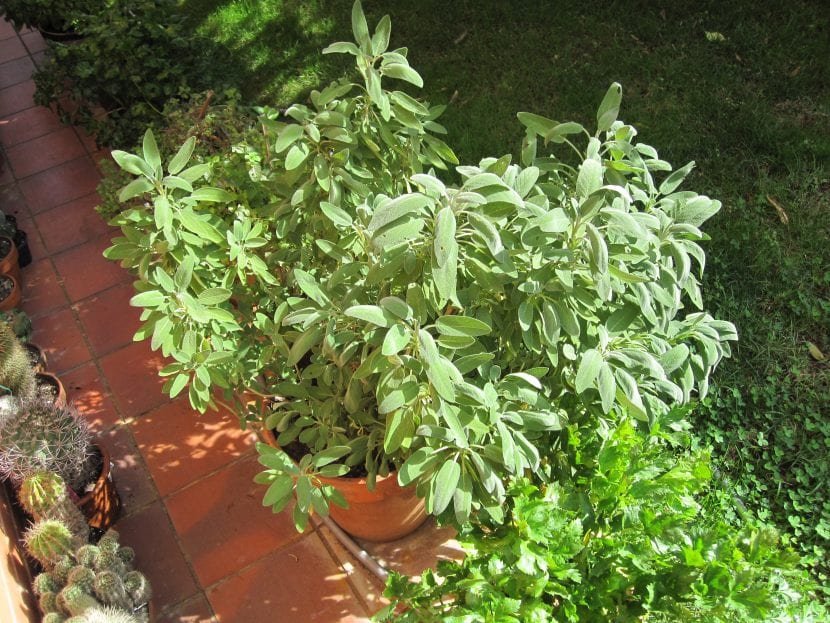
If you want to get a copy, we recommend providing the following care:
Location
You have to place the Salvia officinalis outside in full sun. You can also have it indoors in a very bright room without drafts.
Irrigation
- Flower pot: 2-3 times a week in summer and a little less the rest of the year.
- Garden: during the first year you have to water it often, every 3-4 days, but from the second you can space out the waterings.
Earth
- Substratum: if you are going to have it in a pot, you can use universal growing medium mixed with 30% perlite.
- Land: if you are going to have them in the garden, you don't have to worry about the soil since it is not demanding 🙂.
Subscriber
I advise paying it with guano liquid throughout the growing season, that is, from early spring to late summer or early fall. Other options are egg and banana peels, stale greens, and / or used tea bags.
Multiplication
Seeds
The seeds of common sage can be sown in spring, when the risk of frost has passed. The way to proceed is as follows:
- The first thing to do is fill a pot with universal growing medium and water it thoroughly.
- The seeds are then scattered, taking care not to put too many in the same container. It will always be better to place 2 or 3 than 5 or more, because then it will be easier to get plants with excellent development.
- Afterwards, they are covered with a thin layer of substrate and watered with a sprayer.
- Finally, the name of the plant and the sowing date are written in pencil, it is introduced into the seedbed and it is placed in a sunny exhibition.
The first seeds will germinate after 10-17 days.
Cuttings
A faster way to get new specimens is multiplying it by cuttings, which must be obtained in spring. Stems measuring at least 30cm will be cut, and their bases will be impregnated with powdered rooting hormones. Finally, all that remains is to plant them in a pot with a universal growing medium and water.
If everything goes fine, will root after about 20 days.
Pests
Common sage is a fairly hardy herb, but it can be affected by:
- Mites: they perch on the leaves, from where they feed.
- Aphids: they are very small parasites, about 0,5cm, green, yellow or brown that also weaken the leaves.
- Leaf miners: they are larvae that dig galleries in the leaves.
How to prevent them? Being a rather small plant and also edible, you can simply clean it with a brush moistened with water. It can also be very useful, especially to prevent, place yellow sticky traps that you will find for sale in nurseries, or sprinkle diatomaceous earth on the floor.
Rusticity
Withstands cold and frost up to -7ºC.
What is the Salvia officinalis?
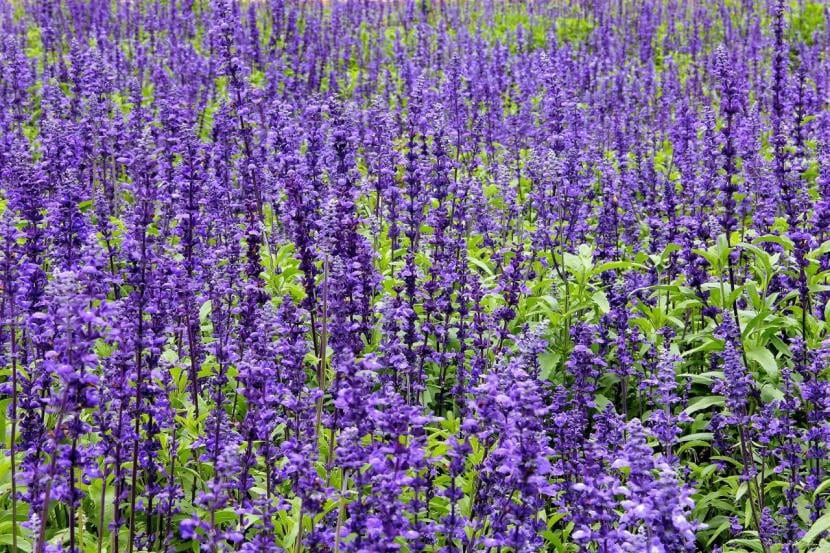
Ornamental use
It can be grown both in a pot and in the garden, both indoors and outdoors. With her you can create great borders, But also you can decorate the patio in an incredible way.
Culinary uses
Leaves
- They are used to prepare teas.
- They are used as a condiment for meat and pasta dishes.
- As a flavoring for various dishes, such as those with sausages and / or eels.
Flowers
Jams are made with the flowers of common sage.
Medical uses
La Salvia officinalis It has many medicinal properties, which are: antiseptic, carminative, stomatal, antispasmodic, stimulant and antidusorific. It is, therefore, a great remedy to treat diseases of the respiratory and digestive system, and also to prevent night sweats.
Contraindications
Lactating women and children under two years of age should not consume it.
When is it collected?
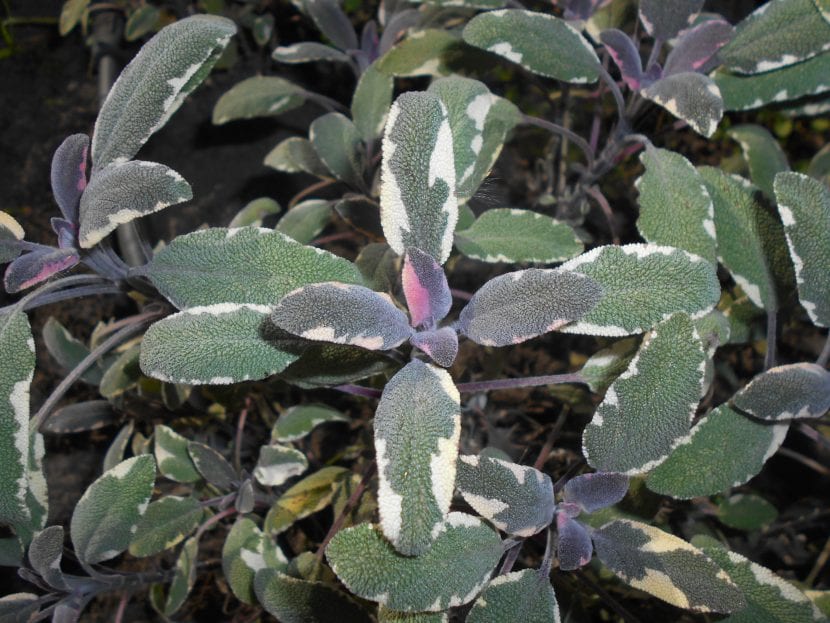
From the second year, during spring or early summer, you can collect some stems that are at least 10cm tall.. Then, you have to let them dry in the shade or in the microwave for a couple of minutes. Another option is to put your leaves between waxed paper and put them in the freezer.
What did you think of this plant?
I have a very small 20cm sage plant. In a flower pot. It has flower buds. It will be time to put it in the garden, it is springtime I live in Chile in the south.
Hi Doris.
Yes effectively. Now you can plant it in the garden.
Greetings.